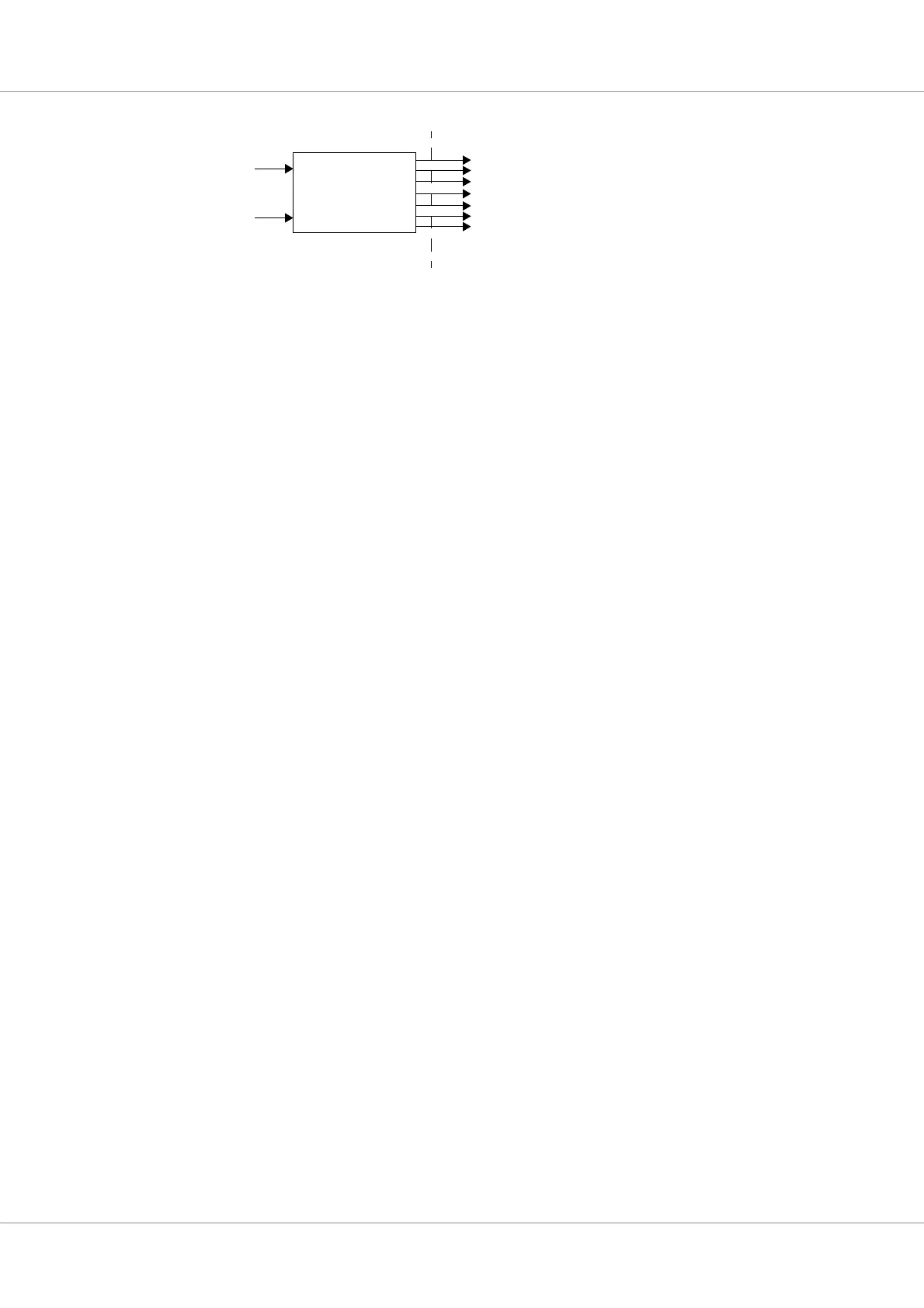GR712RC-UM, Jun 2017, Version 2.9 106 www.cobham.com/gaisler
GR712RC
16.3.4 Time interface
The time interface is used for sending Time-codes over the SpaceWire network and consists of a time-
counter register, time-ctrl register, tick-in signal, tick-out signal, tick-in register field and a tick-out
register field. There are also two control register bits which enable the time receiver and transmitter
respectively.
Each Time-code sent from the GRSPW2 is a concatenation of the time-ctrl and the time-counter reg-
ister. There is a timetxen bit which is used to enable Time-code transmissions. It is not possible to
send time-codes if this bit is zero.
Received Time-codes are stored to the same time-ctrl and time-counter registers which are used for
transmission. The timerxen bit in the control register is used for enabling time-code reception. No
time-codes will be received if this bit is zero.
The two enable bits are used for ensuring that a node will not (accidentally) both transmit and receive
time-codes which violates the SpaceWire standard. It also ensures that a the master sending time-
codes on a network will not have its time-counter overwritten if another (faulty) node starts sending
time-codes.
The time-counter register is set to 0 after reset and is incremented each time the tick-in signal is
asserted for one clock-period and the timetxen bit is set. This also causes the link interface to send the
new value on the network. Tick-in can be generated by writing a one to the register field. A Tick-in
should not be generated too often since if the time-code after the previous Tick-in has not been sent
the register will not be incremented and no new value will be sent. The tick-in field is automatically
cleared when the value has been sent and thus no new ticks should be generated until this field is zero.
If the tick-in signal is used there should be at least 4 system-clock and 25 transmit-clock cycles
between each assertion.
A tick-out is generated each time a valid time-code is received and the timerxen bit is set. When the
tick-out is generated the tick-out signal will be asserted one clock-cycle and the tick-out register field
is asserted until it is cleared by writing a one to it.
The current time counter value can be read from the time register. It is updated each time a Time-code
is received and the timerxen bit is set. The same register is used for transmissions and can also be
written directly from the APB interface.
The control bits of the Time-code are stored to the time-ctrl register when a Time-code is received
whose time-count is one more than the nodes current time-counter register. The time-ctrl register can
be read through the APB interface. The same register is used during time-code transmissions.
It is possible to have both the time-transmission and reception functions enabled at the same time.
16.4 Receiver DMA channels
The receiver DMA engine handles reception of data from the SpaceWire network to different DMA
channels.
Receiver Clock Domain
Host Clock Domain
Receiver
D
S
Got Time-code
Got FCT
Got NChar
Time-code[7:0]
NChar[7:0]
Figure 62. Schematic of the link interface receiver.
Got EEP
Got EOP
